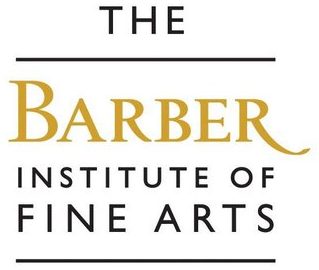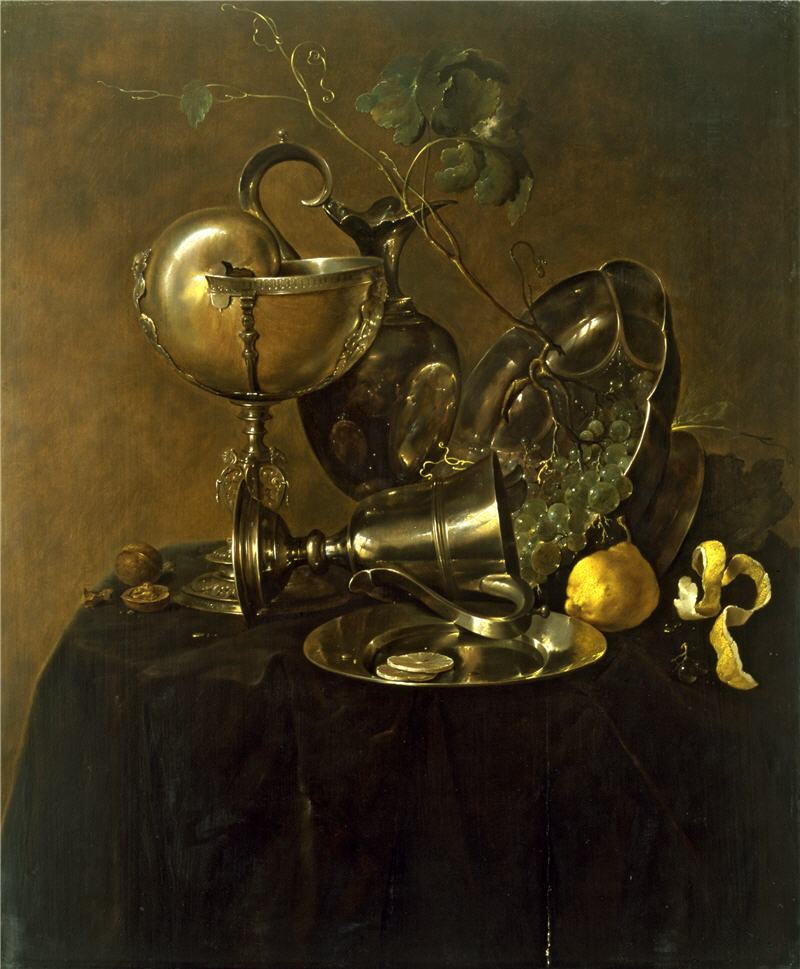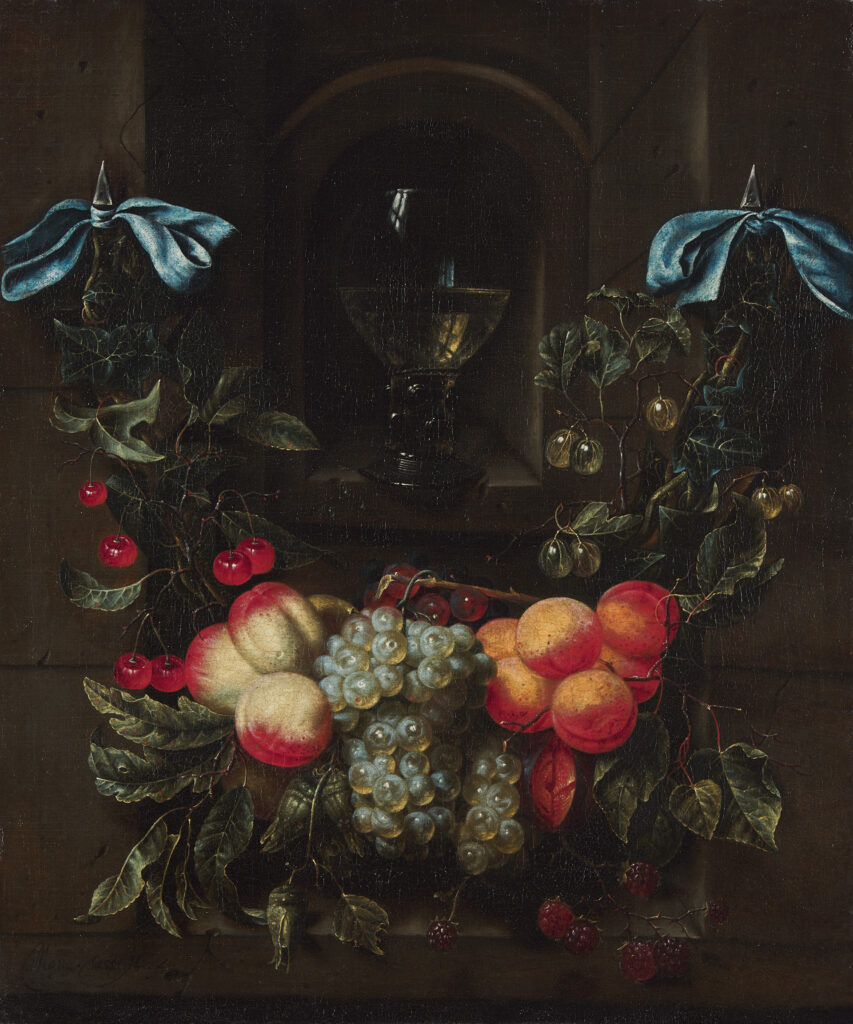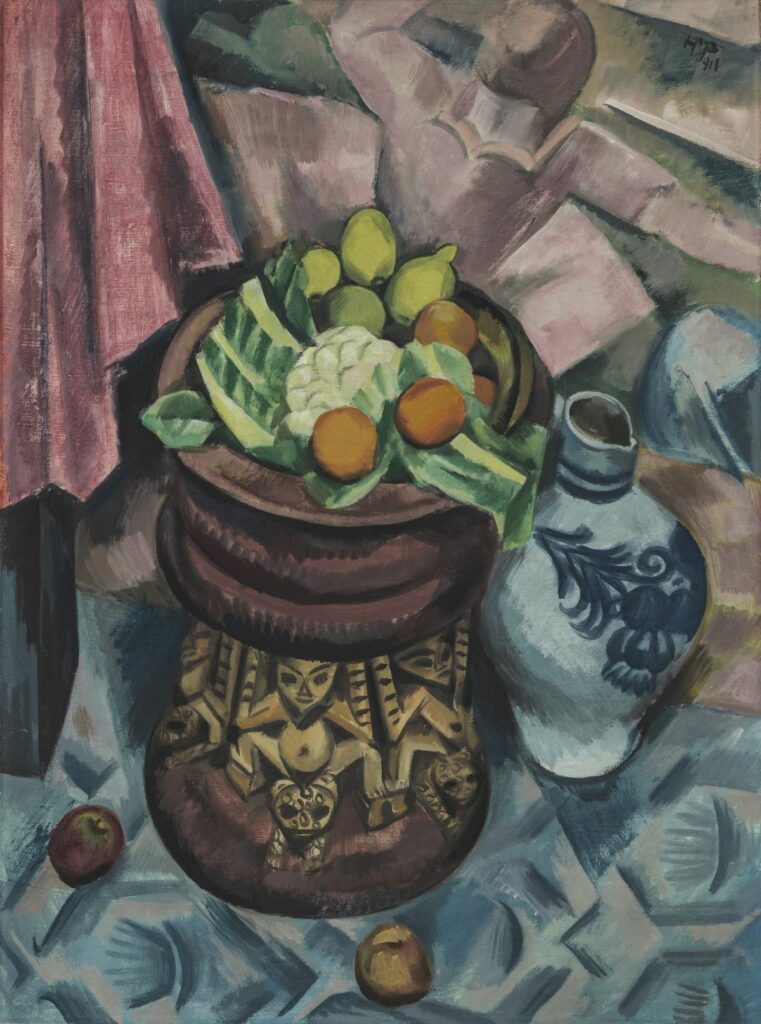Unstill Life
Global Mobility and Consumerism in Still Life Paintings
22 June 2024 – 26 January 2025
Still life paintings have often been considered as impressive assortments of inanimate objects. However, there is also a dynamic and mobile history intrinsic to their production: the expansion of global trade and rise of consumerism.
The emergence of Dutch still lifes coincided with the maritime transportation of colonial ‘rarities’ such as gemstones and precious metals, silks and spices, animals and shells, and ‘exotic’ fruits, which were collected by the elite. Celebratory paintings of this wealth and abundance, however, obscure the brutal conquest of territory and suppression of local populations that took place beyond the frame.
Twentieth-century Modernist art offers different insight into the social fabric of nations underpinned by global expansion and materialism. As pre-World War One Germany underwent a rapid drive towards obtaining ‘Global Power’ status, Max Pechstein’s expressionist still life evidences a fascination with objects and lands that were commonly described as ‘primitive’ – a derogatory and reductive contemporary term. Twenty five years later in inter-war Paris, Fernand Léger’s abstract industrial still life with fruit sheds light on the unsentimental machine aesthetic intrinsic to the city’s consumer foundations.
Together, these paintings convey changing attitudes towards globalisation, capitalism, and consumer culture over time. Instead of only asking ‘What do the objects in these images signify’, these artworks can pose a different question: ‘At what cost did these things get here?’, generating rich dimensions of meaning far beyond what meets the eye.
This display has been curated by Natasha Wilcockson, The Arts Society Collections Intern.






